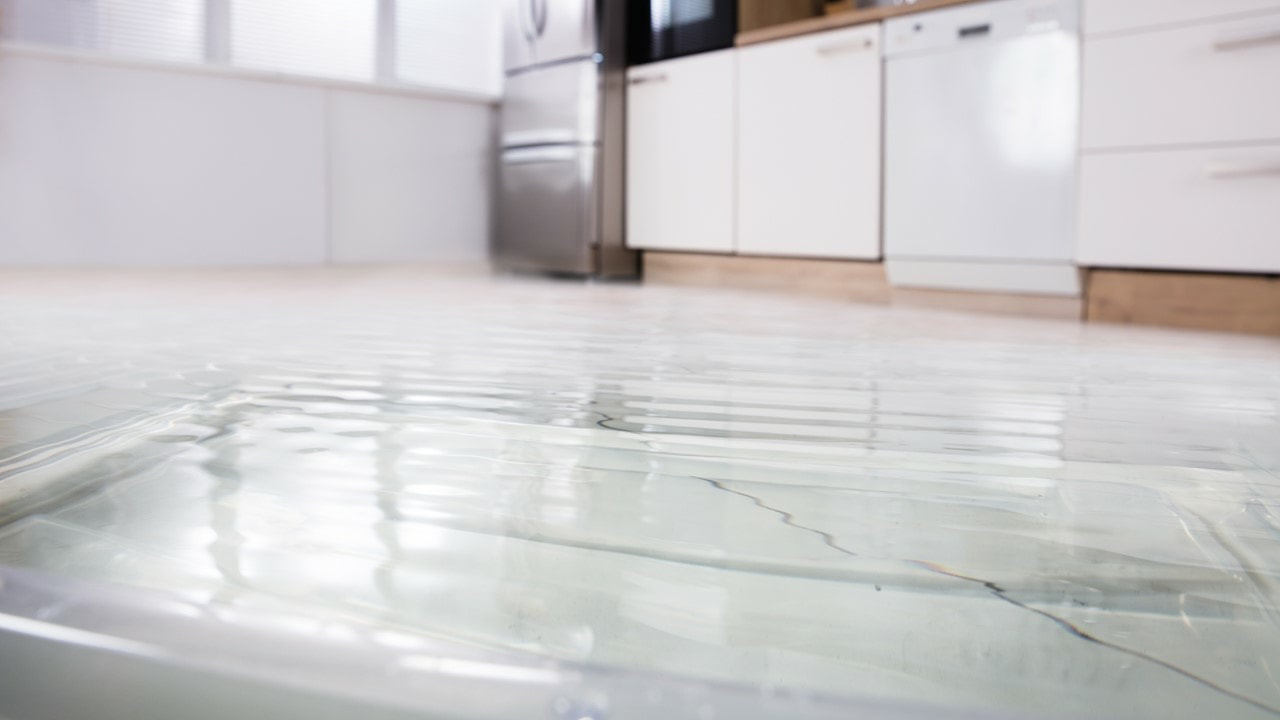|
When it rains, many times, it pours. When it pours, all that water can lead to flooded homes. Did you know homes can flood when there hasn’t been a drop of rain for weeks? A common cause of household flooding comes from appliances that leak or malfunction. Drip, drip, drip. It’s just a small leak, you barely even notice, but is it causing destruction? Uh-oh, the washer failed to drain after the cleaning cycle and as the rinse cycle runs more water it overflows rushing from the laundry room into the kitchen and running down the hallways to the bedrooms. Water from an emergency situation, or a gradual build-up, both can cause costly damage to your home. Dishwashers, Washing Machines, and Refrigerators with Automatic Ice Machines are the three most common household appliances that cause homes to flood and endure water damage. Here are some maintenance and inspections tips to follow to lessen the likelihood of falling victim to an appliance caused household flood. Dishwashers have supply and discharge lines that pump water in and out during the wash and rinse cycles. If one of those lines springs a leak and ultimately explodes, gallons of water can flood the kitchen causing damage. Soapy water can also backup in the dishwasher spilling out onto the floor. This backup of water is usually caused from a malfunction like a faulty float, food and debris clogging the drain gate or the discharge house, or using the wrong detergent. To aid in the prevention of a dishwasher caused household flood, it is recommended that the drain gate be checked frequently clearing debris and food particles. Hoses and connections should be routinely inspected for leaks. Also, purchase and use dishwashing detergent recommended for the make and model of your appliance. A hole as small as a pin prick can cause a constant small drip to lead to big household floods if ignored. Many times, water can build up and cause hidden damage. If a washing machine supply line bursts, it can cause great damage. Again, prevention is key. Check your hoses and connections closely at least twice a year. Are there cracks, holes, any moisture or water spots from the hoses are where connection are made? Does your hose have plenty of room and lie smooth or are there kinks in the hose? If it is time to replace your hoses, think about using stainless steel hoses instead of rubber. Maintain a minimum of four inches between the washing machine and wall. That way hoses aren’t crowded and cramped. Installation of an automatic shutoff valve, that can sense water pooling on the floor and shutdown the water supply by closing the valve, might be a good tool to prevent household flooding. Ice that comes from an automatic maker in the refrigerator/freezer is genius. We love the convenience but again a leaking line to spell household flood disaster. Make sure it is installed properly and the copper hose won’t come loose, or worse, disconnect totally. Routine inspection of the water line is the best way to detect a small leak before it becomes a big problem. The four inches away rule applies to this appliance as well. Leave that gap to prevent crimping. Routine inspection and immediate repair are the best ways to prevent household appliance flooding. You should also inspect your homeowner insurance policy to understand what your coverage would be in an event of an appliance caused flood. Call Kelly Lee Insurance today for a no-obligation quote for all your insurance needs. TAGS: Household Flooding Without Rain, homeowners insurance lake charles la, mobile home insurance lake charles la, trailer insurance lake charles laComments are closed.
|
Archives
June 2023
Categories
All
|

 RSS Feed
RSS Feed